1920s
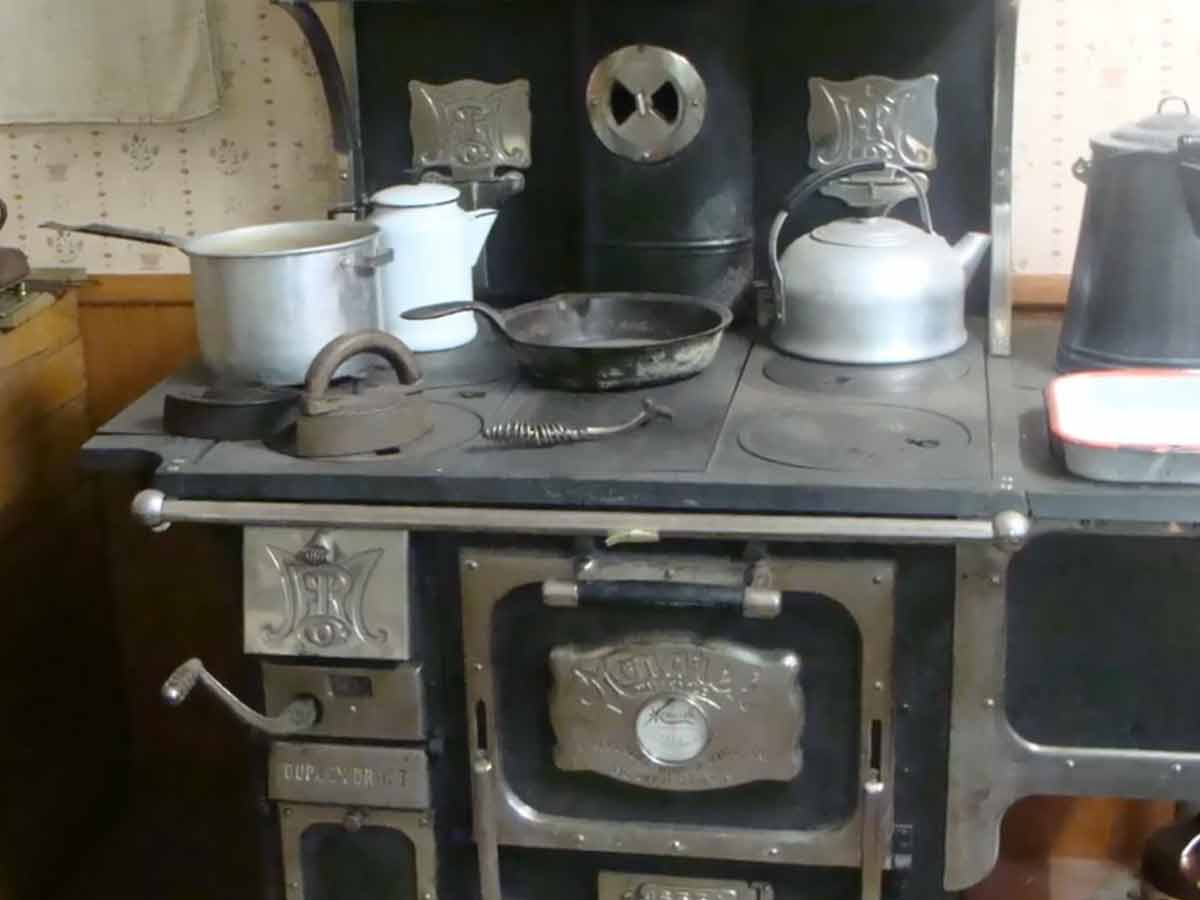
In the 1920s stoves were built as freestanding appliances - ones like in the image below. As you can see, stoves like this have feet and even space for storage, making it somewhat like a piece of furniture. Other than that, however, the stove was much like what we have today with an oven for baking and gas burners on top.
Stoves in the ‘20s were not as airtight but they did have their advantages over modern stoves. Although they weren’t placed between cabinets as we have them now, having an oven with storage for pots and pants seems even more convenient. And with feet holding the whole thing up, you could more easily clean underneath the oven.
1920s (cont.)
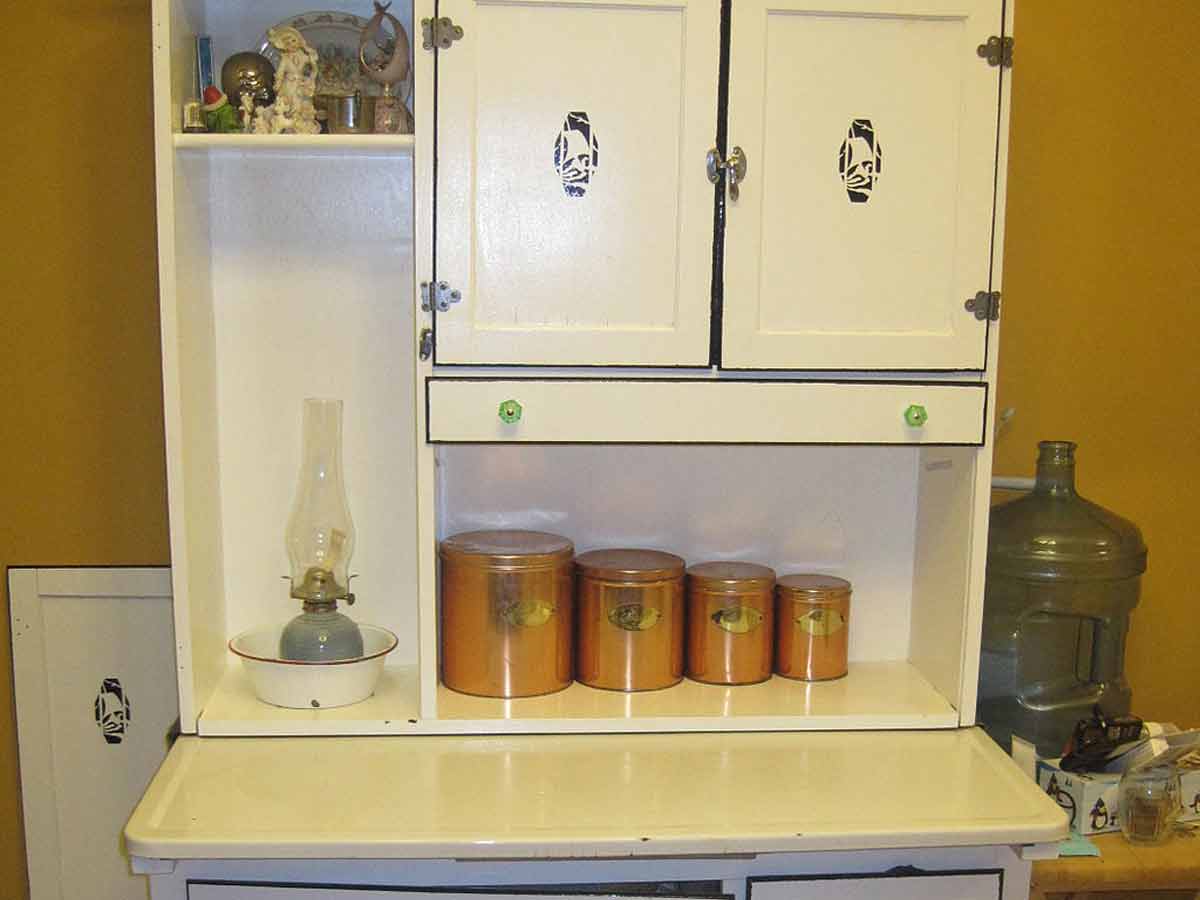
Cabinets in the 1920s were also freestanding. Like the stove, you can see that cabinets in the ‘20s were usually held up by feet. Again, the cabinets are designed in such a way that they look like a piece of furniture for your kitchen. It also affords a combination of open cabinets and ones with doors. And of course, there are also drawers.
Since overhead cabinets were not really a thing in a typical family’s kitchen, these cabinets afford enough room for cooking prep space. You can see, however, how these cabinets were precursors to the streamlined cabinets we have today, even if these ones took up a lot more space. Here, though, the open space at the bottom is just more you have to clean up.
1930s

By the 1930s, things were much more streamlined and a lot closer to what our kitchens are like today. While the design of the oven is obviously different, you can see that the unit is in place next to the cabinets in the kitchen and that the cabinets themselves provide a lot more prep space.
Many homes were also starting to sport overhead cabinets which gave people more storage space than ever before. It’s hard to underestimate how easier it is to move around the kitchen and store everything you need – just look at the 1920s design and then this and you can see how more fluid the design is by comparison.
1930s (cont.)

In the 1930s, art deco was a pretty big thing. Art deco had first emerged in France just before the start of WWI. It influenced the design of buildings, furniture, cars, jewelry, trains, radios, theaters – you name it. The name itself is short for Arts Décoratifs. Above all, art deco represented luxury and glamour.
By the 1930s, the influence of art deco had hit America. Buildings like the Chrysler Building and the Empire State Building were created in the art deco style. Interior design was also influenced by art deco and as you can see the inside of this kitchen looks like a luxurious French kitchen or even a café.
1930s (cont.)
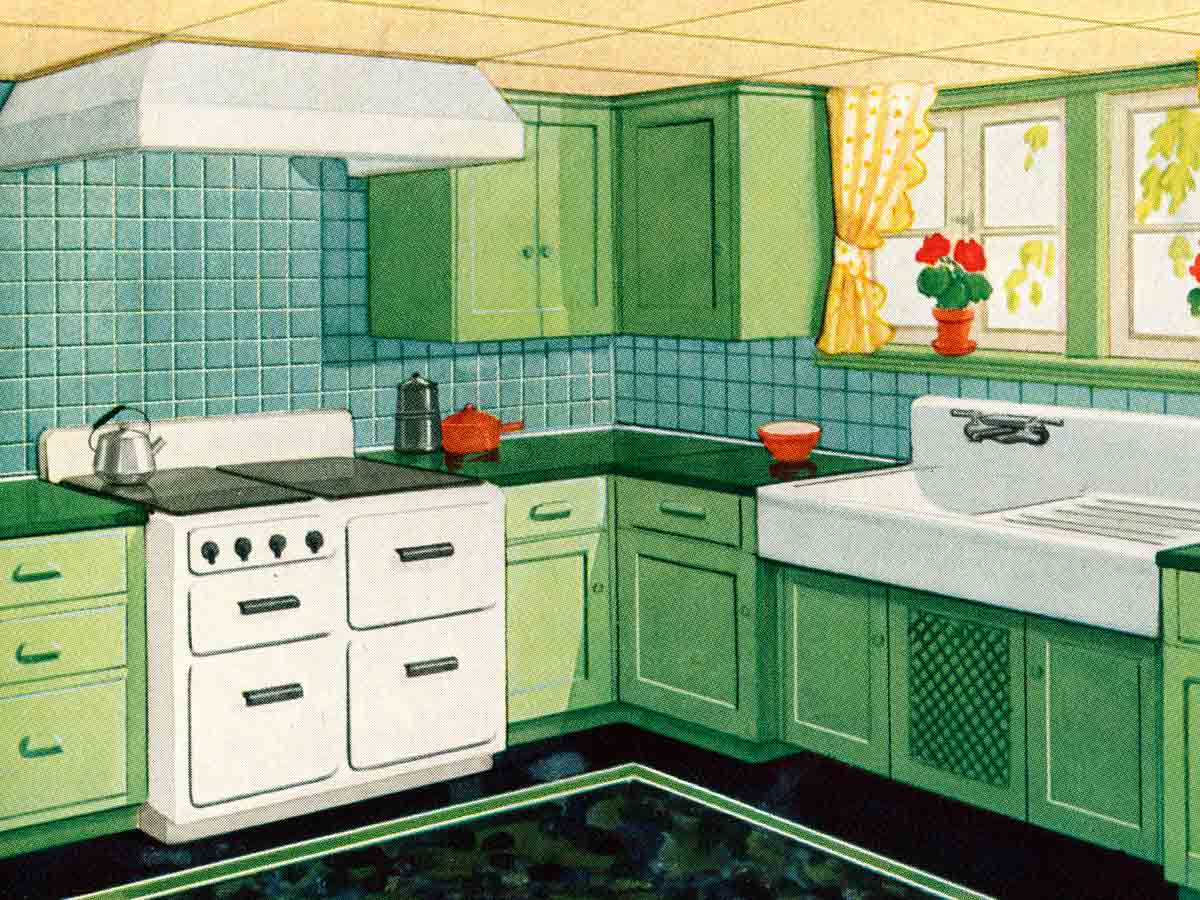
For those not into the art deco look, many preferred kitchens that focused on cleanliness. Surfaces were designed to be easy to clean. That means that the cabinets themselves were often metal because they could be easily wiped and wouldn’t stain as a wood surface could. They were not as elegant of course.
Counters were also metal, usually made of steel so that the surfaces could be wiped easily – like the complete opposite of tile, where you have to deep-clean the grout by scrubbing and hitting it with multiple cleaners sometimes. Floors were made of linoleum, which is generally inexpensive and also easy to clean. Cleaning – ain’t nobody got time for that!
1940s
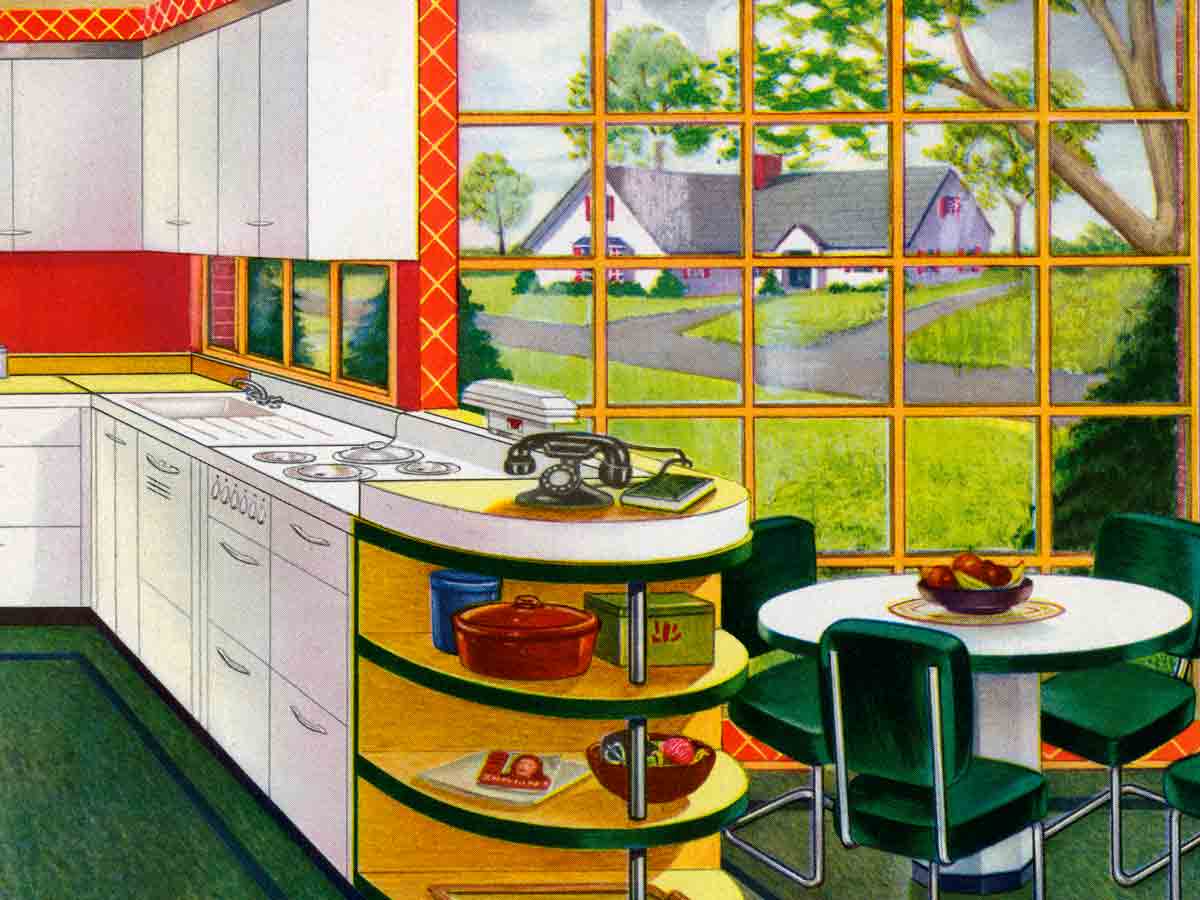
By the 1940s people had made their kitchens so luxurious they felt comfortable enough to start eating in them. As you can see in the image, a small part of the kitchen is reserved for eating, which you could accurately call a kitchen nook. This area allowed families to dine together in the kitchen and it also saved space.
While a more expensive home would likely still have a separate dining area, a nook like this was fine for a small family or home. Cabinets, stoves and everything – even the kitchen sink – are streamlined, even more closely resembling the modern kitchen in everything but style. But perhaps not as many as appliances as you probably have now.
1950s

With the 1950s came the age of the refrigerator. Before the ‘50s, refrigerators were designed as they are now, so they were a lot more expensive. So, expensive that most people couldn’t afford them. If they had leftovers, that would just have to get thrown out most likely unless it was something non-perishable.
The 1950s fridge was aimed at the middle class. The design of the fridge itself was a lot more elegant than anything they had in the ‘20s so it wasn’t something you needed to tuck away in a corner or something – it actually looked nice. They weren’t just a metal box with a giant ice block in them.
1950s (cont.)
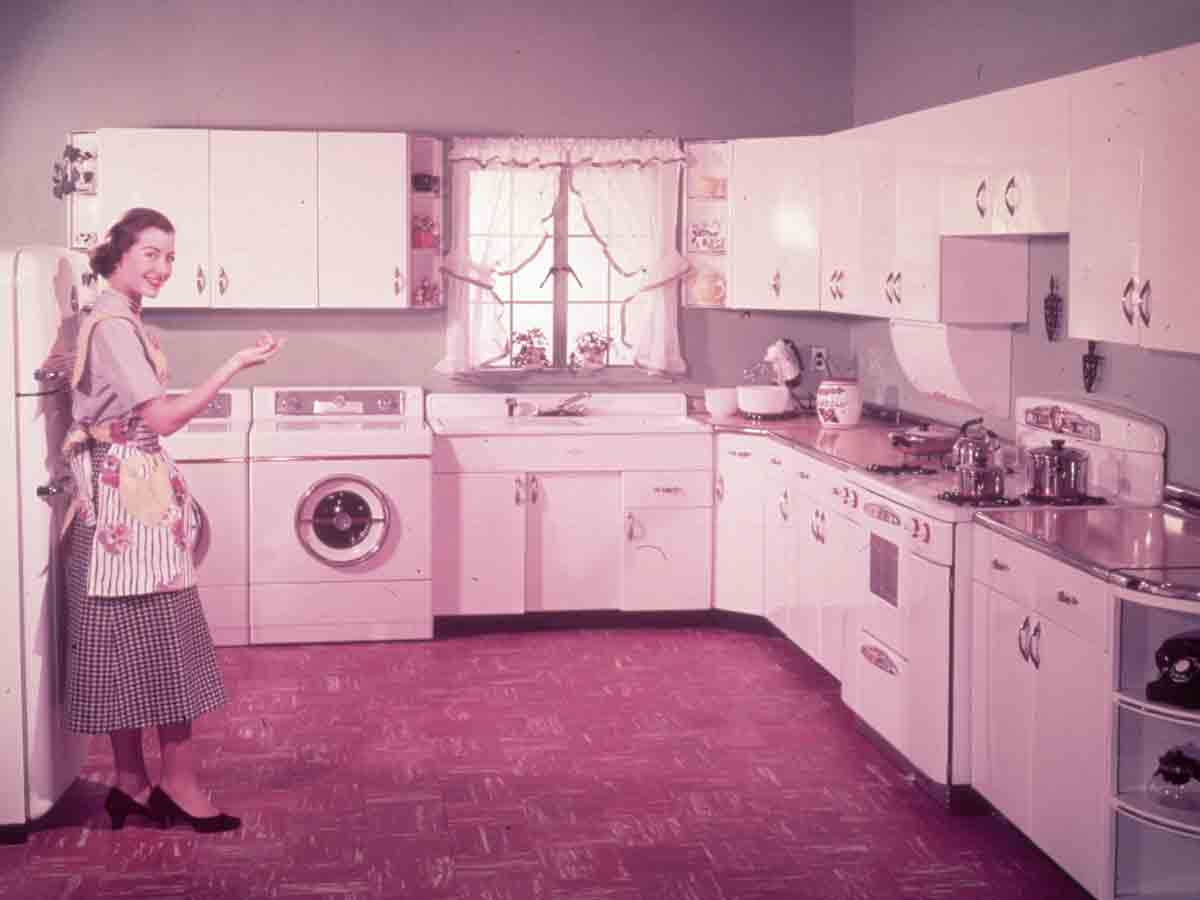
The 1950s was a time of many innovations and not just the elegant new fridge. People had washing machines much like we have today and people would often place those in their kitchen, as you can see in the 1950s kitchen set-up below – which has a washer and dryer. But they also had things nobody has in their kitchen today.
For example, rather than a ladder or step stool for reaching high up places, they had built-in steps in their cabinets. The steps could be pulled out and you could step up on them to reach the overhead cabinets. This would be ideal for homemakers on the short side during this time. However, as to how safe the design was – we cannot say.
1950s (cont.)
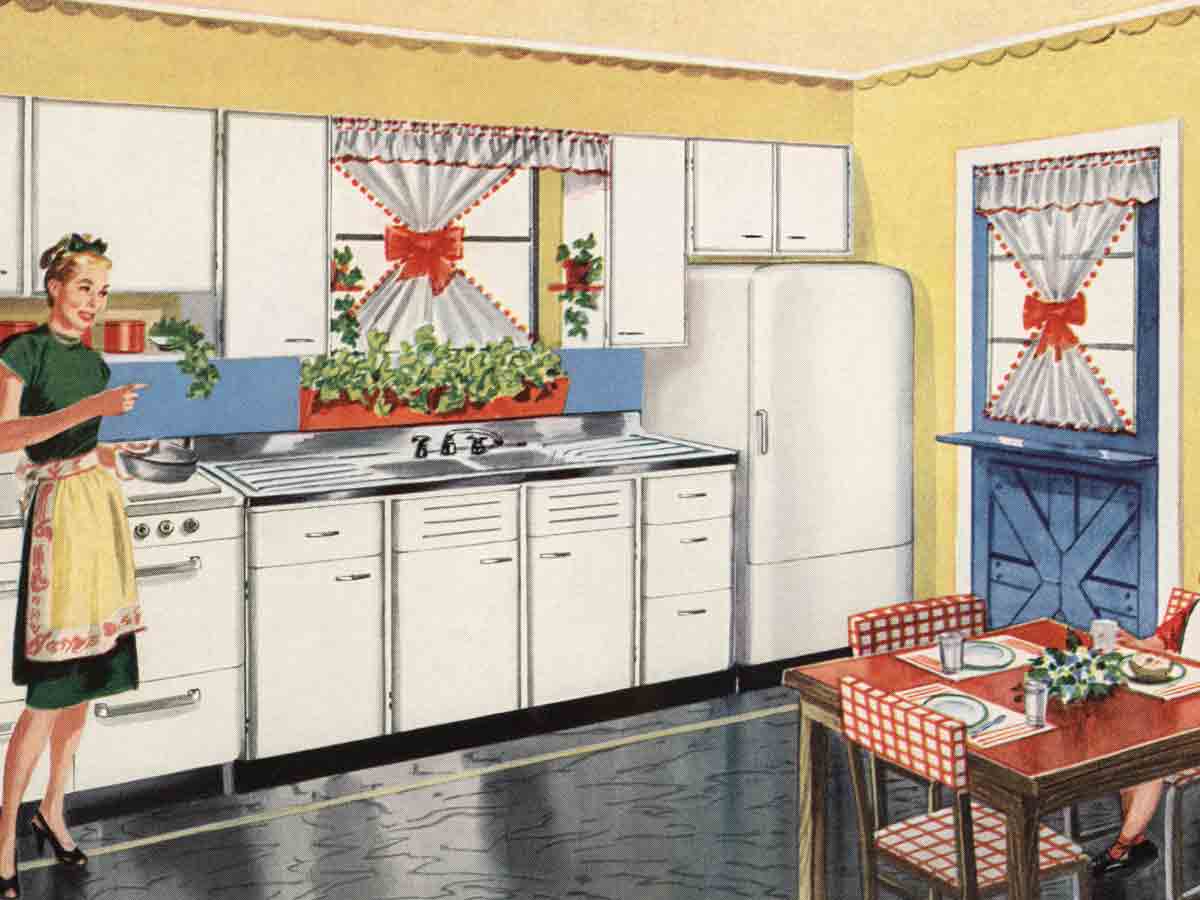
One of the most notable things about kitchen design in the 1950s was the open kitchen floor plan. Where the kitchen used to be tight-spaced and somewhat claustrophobic, the open plan made the kitchen a lot more inviting, allowing families to dine together and talk together, so mom wasn’t shoved into a lonely corner.
Certainly, the open kitchen gave people a lot more space to work with- more countertop space, storage space and room to move around. When cooking large meals, you can’t take kitchen space for granted. The 1950s open kitchen design is the one we still use today in most homes, although apartments, not as much.
1960s
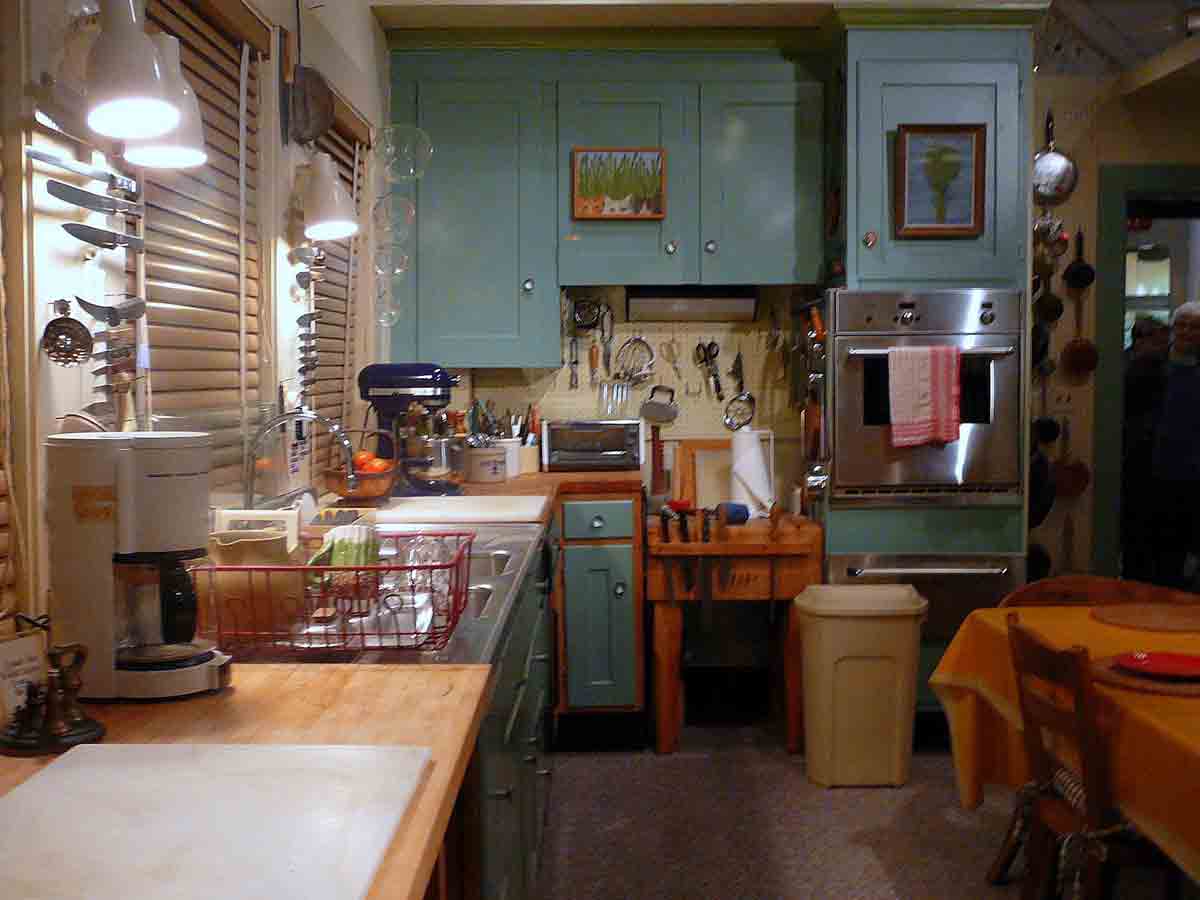
Julia Child revolutionized American cuisine, bringing French cooking into the American home. She wrote multiple cookbooks and debuted a television program called The French Chef in 1963. Once Julia Child established herself as the first great celebrity chef, everyone wanted to be like her and cook like her.
And of course, most wanted a kitchen just like hers too, and that meant using peg boards. With peg boards, your most essential kitchen tools could be right at your disposal. Kitchen shears, pans, cheese graters, spatulas, ladles – they could all be hung up on a peg board, just like the ones you find at retail stores and in particular home improvement stores like Home Depot.
1960s (cont.)
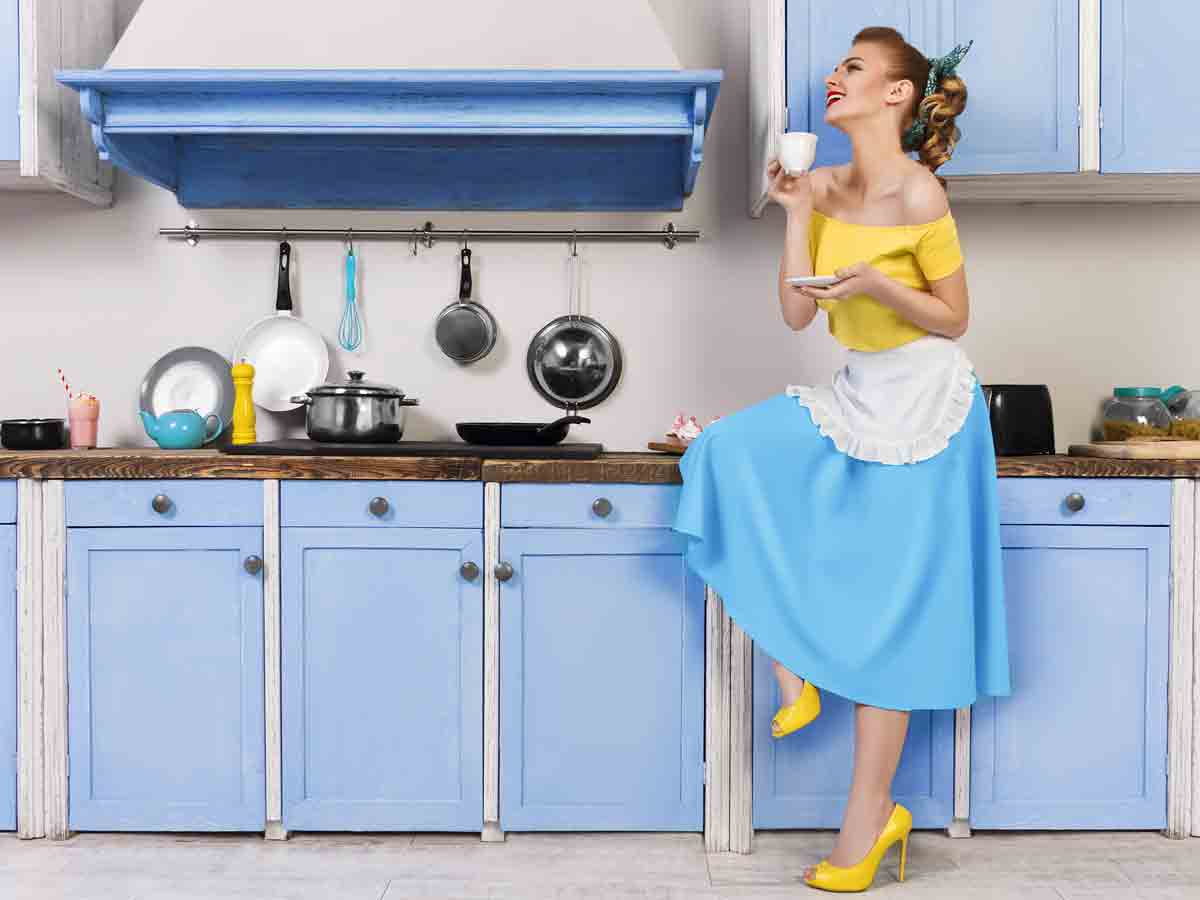
Bold colors, prints and patterns were a huge part of the 1960s look. The 1960s were a more colorful time to be sure and people weren’t afraid of color then. In the 1950s, things were a little more conservative and kitchen designs today are kind of that way too for the most part.
A bold print or pattern would be sure to make a statement. If you wanted a hip and cool kitchen, you had slap that wallpaper on and really go all in. Of course, that all became outdated pretty fast. Probably when people realized wallpaper sucks and it’s a total pain to peel off. So, by the ‘70s there was much less of that.
1970s

The 1970s were about even bolder and more saturated colors. Kitchens were not as bright but definitely just as colorful. Altogether, the ‘70s were about being even more daring than before. More interesting patterns might implement tile or foiled patterns on the walls. Cabinets would be interesting colors too.
Above you can see an example of what a 1970s kitchen might look like. Note the orange patterned tile backsplash and the avocado green cabinets. It’s certainly not the most beautiful kitchen by today’s standards but in the ‘70s everyone would think a kitchen like this was totally groovy.
1970s (cont.)
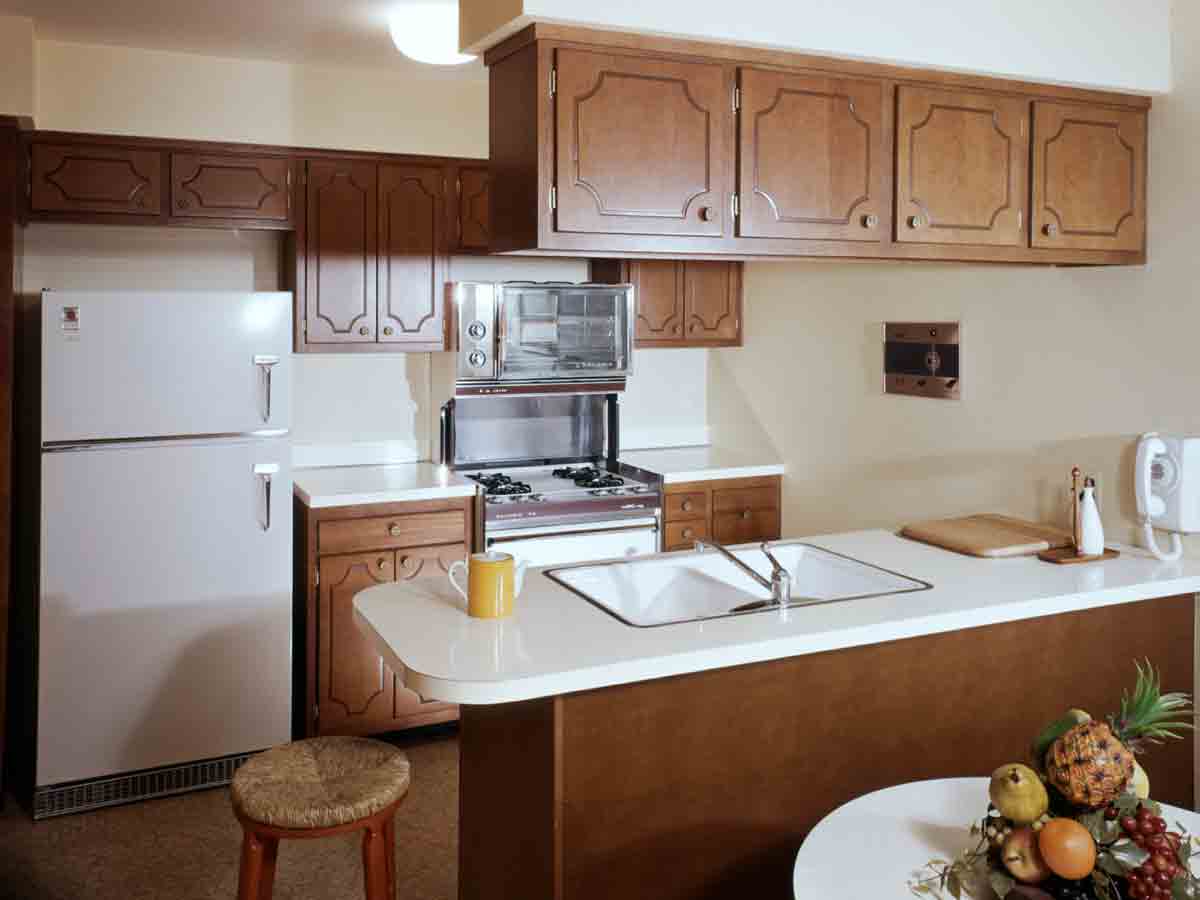
The 1970s also had some great innovations when it came to appliances. Some refrigerators for example came with built-in ice makers and dispensers. You no longer had to buy ice or use an ice tray if you had one of these. Of course, they had ice dispensers before but they certainly were not common in the home before the ‘70s.
The 1970s also introduced plenty of new appliances, most of which we still use today. For example, there was the slow cooker as well as the food processor. These time-saving appliances have changed American cooking in a number of ways and it’s hard to imagine life in the kitchen without them.
1980s

In the 1980s, black and white kitchens were all the rage. Today its stainless steel and black or even all stainless-steel appliances. But then white appliances were a thing for some reason and being white, they were prone to discoloration. If you know anyone with a stove from the ‘80s today, that stove is probably more like yellow or off-white.
But it didn’t look like that when they bought, I can tell you. Cabinets and flooring could even be in black and white as well. The checkerboard flooring was a popular choice and there might even be black and white tiles, or just black tiles and white cabinets. Today it would be faux pas, so don’t think about trying it!
1990s
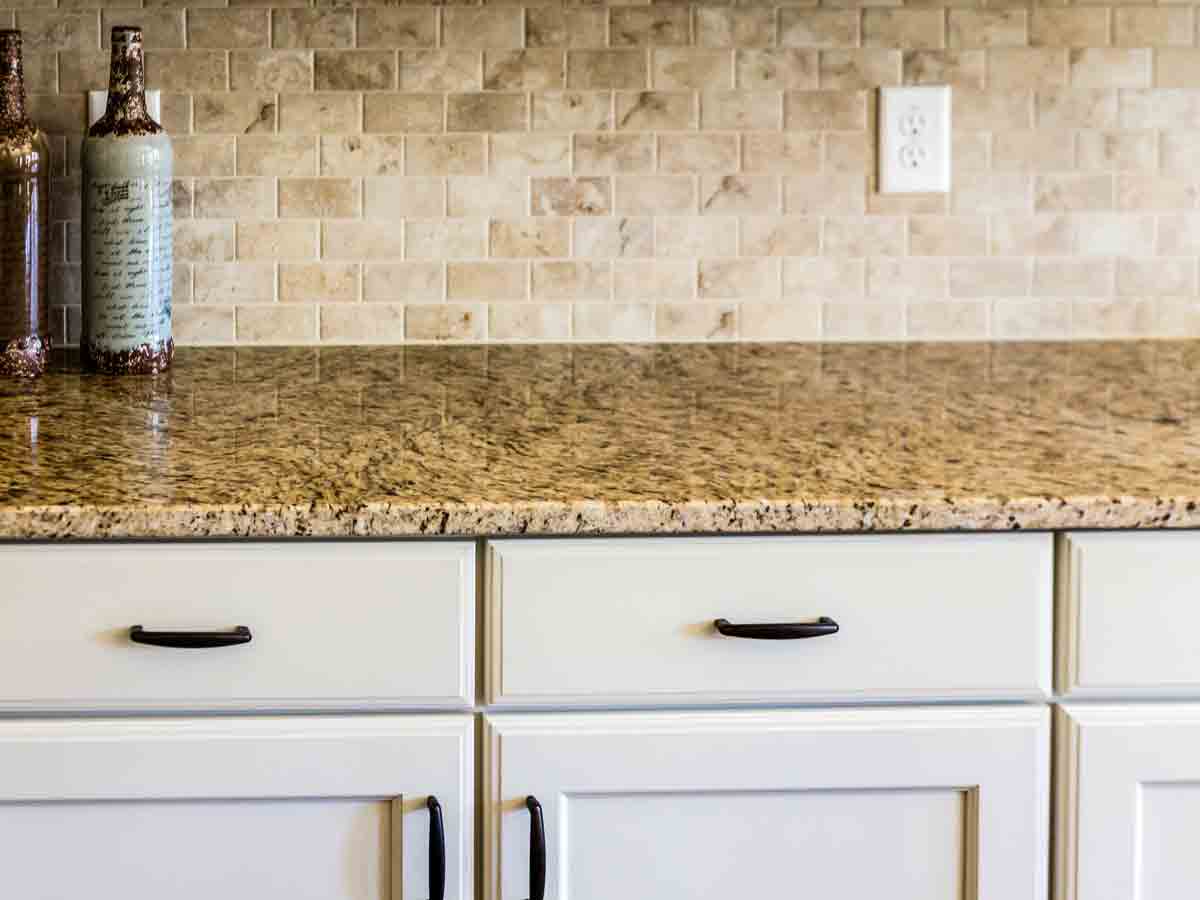
The 1990s signaled the rise of granite countertops. While not everyone had granite countertops, as they were expensive, and still are, it would become the ideal countertop for a kitchen. Granite has both elegance and durability. It’s also easy to maintain because it can be easily wiped clean.
Lighter color granite tops were a little more popular in the ‘90s whereas now it’s more about darker tops. Previously the easiest countertops to clean were of course, metal, laminate, Formica, and wood. But once granite became a thing, that’s what everyone wanted and still wants today. And while the colors and styles have varied slightly since, the ‘90s was really the beginning of the modern kitchen as it looks today.
 Author
James Stephens
Last Updated: October 01, 2025
Author
James Stephens
Last Updated: October 01, 2025